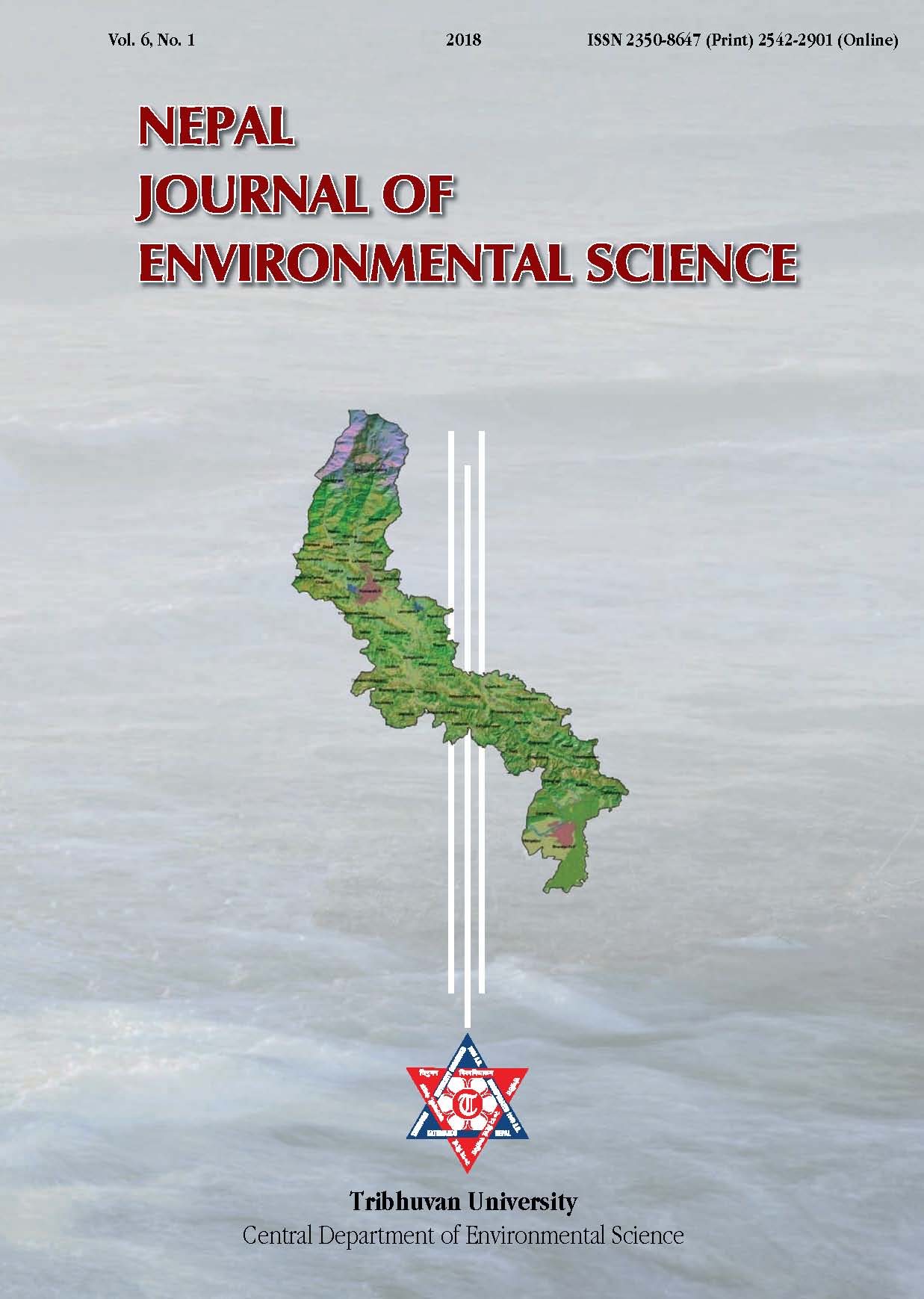Hill slope terrain and land-use assessment using GIS and Remote Sensing techniques: A case of Pikhuwa sub-watershed in the Mid-hill, Nepal
DOI:
https://doi.org/10.3126/njes.v6i0.30124Keywords:
GIS, Hill-slope, Land-overuse, Mid-hills, Pikhuwa, RSAbstract
Agriculture practice on hill-slope terrain depicts the sensitivity indicators of the vulnerability in terms of global climate change. The major aims of the present research are to assess the land-use pattern conditioned by existing hill-slope terrain based on different land capability class recommend by land resources mapping project, 1986 in the Pikhuwa sub-watershed of Mid-hills, Bhojpur, Nepal. An overall research data derived, processed and analyzed using Geographic Information System and Remote sensing tools and techniques. The land capability class, current land-use and digital elevation model with 30 meter spatial resolution have primarily considered as a major variable for spatial analysis. The analysis estimated about 33.68% individual area of overall agriculture patches have remained on above 30 degrees slope of the terrain topography, which denotes the condition of land-use is not suited technically based on land capability class and recommendation made by LRMP, 1986. In the sub-watershed, the current land-use condition on hill-slope is being much vulnerable due to the steep slope, poor slope terracing and unmanaged surface runoff during monsoon.
Downloads
Downloads
Published
How to Cite
Issue
Section
License
This license enables reusers to distribute, remix, adapt, and build upon the material in any medium or format for noncommercial purposes only, and only so long as attribution is given to the creator.




